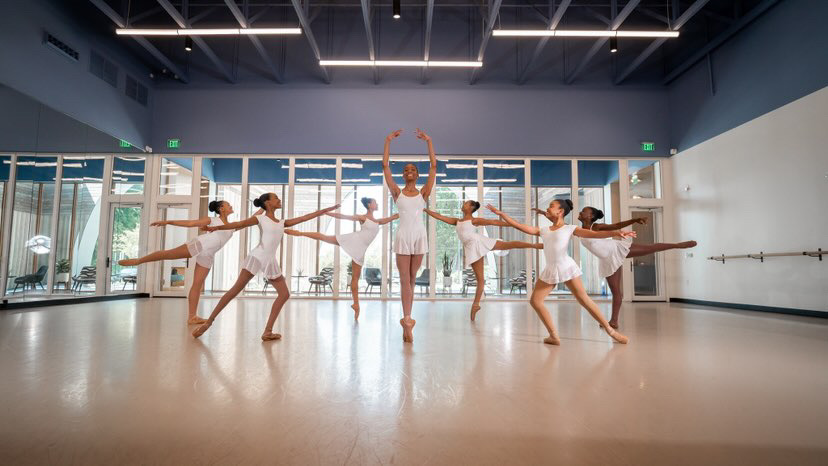Pointe shoes clutter the floors of two notable Memphis ballet studios. Rosin spreads across the floors as ballerinas scrape them on their shoes. Á la seconde turns and pirouettes fill both studios as Ballet Memphis and Collage Dance Collective have been given the title of being in the top 50 largest ballet studios in the country.
“It feels amazing [to hold this title],” Cristina Tekemska (12) said. “I did not expect that … I always have seen [Ballet Memphis] from a smaller point of view because there are so many huge dance studios in like New York and California. It feels like quite an honor to see it get nationally recognized because it’s such a beautiful company and has been around for so long.”
Ballet Memphis ranked 32 out of 50 for the largest ballet companies in America. Founded over 35 years ago, Ballet Memphis serves as a staple dance studio in Memphis that delves into ballet, highlighting the human spirit. Ballet Memphis has managed to further students’ knowledge of ballet while also offering them support throughout their ballet journey.
“Our coaches tell us to ‘go out there and perform’ because nobody in the audience knows what the correct choreography is supposed to be, so if you mess up it is not a big deal,” Anika Bhatt (12) said. “Just keep going and enjoy it because [during] a performance you’re meant to have fun and show the audience you’re having fun. During show week, we don’t focus so much on choreography and [instead] just enjoy the performance.”
Collage Dance Collective ranked 46 out of 50 for the largest ballet companies in America. Originally founded in New York, Collage leapt to Memphis in order to give young, specifically Black Memphians the opportunity and resources to learn the art of ballet. Collage is not only the 46th largest ballet company in the country but is also the largest Black-owned ballet studio in the South.
“At [Collage] it’s predominantly people of color, so it’s very empowering to hear their perspectives and see how they embody being a ballerina,” Saviana Wakefield (11) said. “[Our coaches] wanted to bring the arts to Memphis to show kids who normally wouldn’t have the opportunity to dance classically otherwise, [that they] have a place in the studio.”
Ballet is often misinterpreted as a form of dance that is only meant to look beautiful. Yet behind each satin, pink pointe shoelace are hundreds of blisters and wounds due to the intensity of this sport. The perfect combination can take months to master; the perfect leap can take years to master; the perfect technique may never be mastered. With every tutu comes stressful thoughts that are fixed in many ballerina’s brains. They have to hit every move while also connecting with the audience and portraying a story.
“[Ballet] is a lot more physically taxing than [people] would think,” Tekemska said. “[They] think that it is not really a sport, [that] it’s not that athletic or [that] it’s boring and a bunch of turns and leaps [they] could easily do.”
In most performances, ballerinas perform in groups and match each other’s every move from turn sequences to emotions. They spend hours a day practicing together, not only bettering their skills but also building friendships within their studios. Most ballerinas who start young are able to form friendships that start from childhood and carry on into adulthood.
“This will be my last season at Ballet Memphis,” Bhatt said. “Being with some of the girls I’ve been with since I was six years old and now seeing us all and we are seventeen, eighteen getting ready for college is a bittersweet feeling.”
Behind every leotard is a ballerina with a story to tell. Whether her leg extends past her head or her fouettés break a world record, every ballerina once started on the bar in first position. As most high school ballerinas from Collage Dance Collective and Ballet Memphis venture into adulthood they leave a part of themselves encased in each studio’s mirror. As the once beginner ballerinas turn into senior ballerinas, they become the dancers that the current beginners look up to. Both dance studios have managed to produce memories and growth for all these dancers that will forever live within their pointe shoes.
“I’m probably going to leave [ballet] in my childhood,” Tekemska said. “I remember when I was younger and sometimes the older kids would peer into the studios, and I would be like ‘I have to do good; I want them to think I’m a good dancer.’ Now I get that same feeling and I am like ‘I want to do good so [younger ballerinas] see how happy I am with it and want to continue it.’ It’s a nice full circle moment.”





































